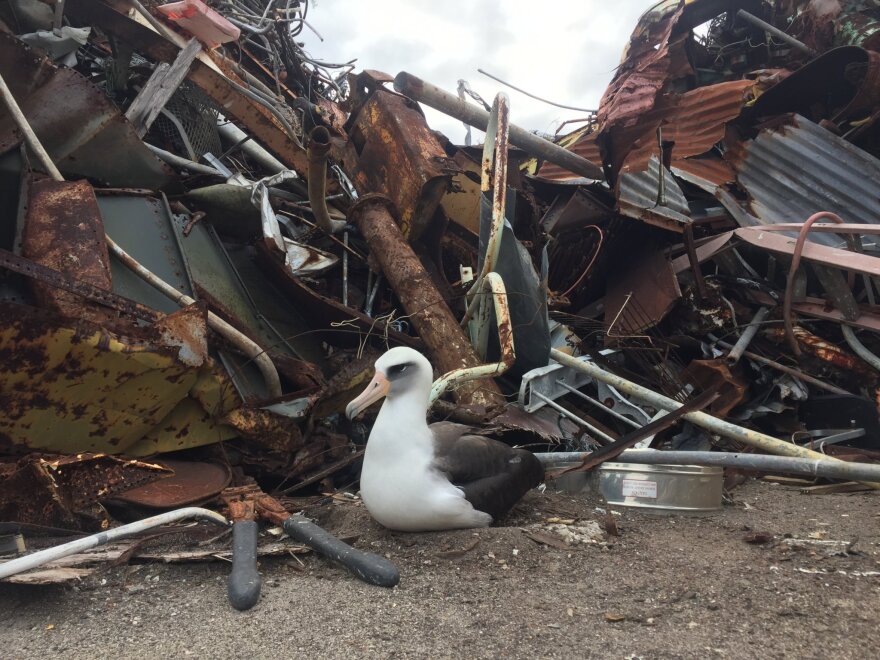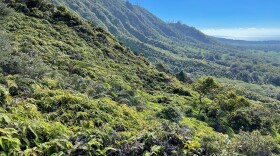Special thanks to the Macaulay Library at the Cornell Lab of Ornithology for today's field recordings.
M?l?, or Laysan albatrosses, breed in large numbers across the Northwestern Hawaiian Islands, with nearly a million birds counted on Midway island alone.
M?l? largely disappeared from the main Hawaiian islands long ago. They nest on the ground in large colonies, which makes them extremely vulnerable to predators, including rats, dogs and humans.

But in the past few decades there have been successful efforts to reintroduce them to Kauai and Oahu.
Since m?l? return to land every year during the beginning of makahiki season, they are associated with the god Lono.
Aside from breeding season, they spend most of their time soaring over the open ocean. They are incredibly graceful in flight, but a bit clumsy on land, which earned them the nickname "gooney birds."
M?l? find their first mate around the age of seven. They are monogamous and remain with their mate for life unless one of the pair dies. That's quite a commitment when you consider that m?l? can live for decades.
One female Laysan albatross, Wisdom, made headlines this month for hatching a new chick just after her 70th birthday.




